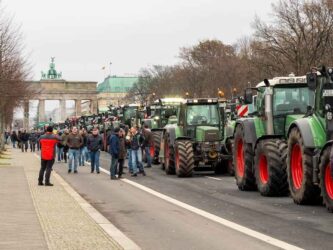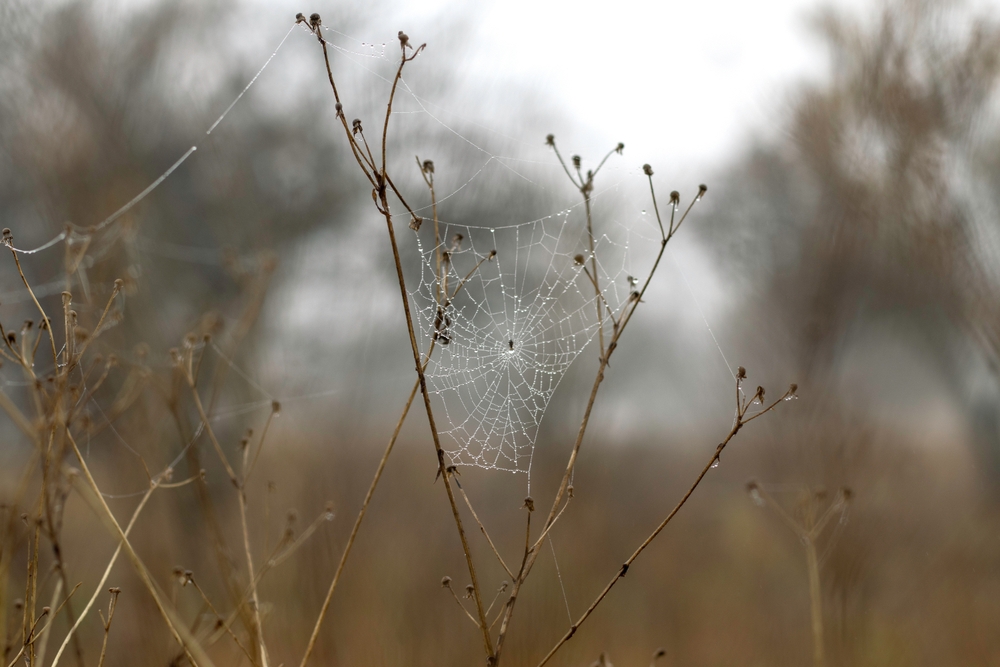Bad Policy Reaps What It Sows… and Costs Taxpayers
Joel Salatin|May 25, 2024

I just returned from a week in Austria and Hungary doing farming seminars. I learned – amazingly (ha!) – that our mainstream narrative about the farmer protests in Europe is not exactly correct.
Most Americans come away from our news reports with the notion that the EU dislikes its farmers… or something like that.
We shake our heads and wonder why the EU is waging a war on farmers. After all, farmers are pretty benign folks, aren’t they? Who wants to hurt farmers?
One thing I noticed before traveling… there were all these pictures of the tractorcades showed big tractors.
As a farmer who has several tractors, I know what big tractors, medium tractors and small tractors look like. These distraught European farmers are not driving medium and small tractors. They’re driving massive tractors.
And then the hundreds of farmers who attended my seminars in Europe confirmed some things.
Paid Protest
First, this is very much an industrially financed protest. Big food and farming corporations are paying the farmers to go and demonstrate.
Why?
Nearly one half of all farm income in the EU is a direct subsidy. A government payment. It makes the American subsidy/crop insurance system look downright libertarian.
These subsidies enable farmers to overbuy everything: equipment, buildings, inputs like fertilizer and pesticides.
Farmers receive a check just for owning farmland.
That means when land comes up for sale, new entrants are at a competitive buying disadvantage because they don’t have a gravy train of subsidies coming into their bank account.
In Austria especially, that means existing farmers are expanding their acreage to the exclusion of new farmers trying to enter.
That creates a static system of ownership, thought and protocol.
Since the average farmer is 60 years old and therefore on the downside of his career, he’s not open at all to new ideas like compost instead of chemical fertilizer from Putin.
Many large outfits make money off these farmers’ purchases, whether what they’re buying is lumber, steel or chemicals. While it’s true that most of these farmers don’t see a pathway to success if they’re weaned off the government nipple, their agri-business providers are equally concerned about future sales.
Small farmers are not part of the protests. In fact, small farmers say the No. 1 problem in European agriculture is the subsidies. Absent those and a new market-driven dynamic would bring innovation and true long-term problem-solving.
And perhaps a new generation of younger practitioners.
The element that differs there compared to the U.S. is how these large farms are imbedded in and near villages.
In America, the largest farms are way out in rural places, not mashed up against towns. The chemicals, odor and ugliness are largely out of sight and therefore out of mind.
Not so Europe.
The much higher population density and landscape layout means millions of Europeans are cheek-by-jowl to smelly, obnoxious industrial-scaled farms.
People don’t like what they see, hear and smell. And they really don’t like that their taxes subsidize the worst offenders. As a result, the average citizen awareness of industrial farming practice and effect is much higher than it is in the U.S.
As fertilizers from Russia become more expensive, energy becomes more expensive, and governments commit to larger budgets for weapons for Ukraine, a reduction in subsidy could not come at a more inopportune time for large farmers.
At least, that’s the way they see it.
The Real Fight
Ultimately, this is not a fight about farmers. It’s a fight about what kind of ecology and what kind of landscape Europeans will give their children.
Big ag is trying to message it as a war against farmers. No, it’s a war against a certain kind of farmer. A farmer who uses public largesse to abuse the very landscape people see and smell every day.
This is why you don’t see small tractors. You don’t see small farmers.
Farmers who pasture their livestock rather than confining them in barns are largely excited about these developments.
Farmers who pasture their chickens instead of putting them in stinky chicken houses are excited.
Composting is virtually unknown. Raw manure is sprayed or spread across the landscape, stinking up everything for days. Farmers who compost, who don’t buy Putin’s fertilizer, who let their animals harvest most of their feed instead of using machinery and petroleum to do it are largely relieved to finally see the public say “enough.”
Sob stories get traction. They always have and always will. The crybaby tends to win in the court of public opinion.
But what happens when people realize what they thought was proper is actually abusive? What then?
We’re seeing it. You won’t hear that angle on the evening news in America.
You won’t even hear it from conservative podcasts because conservatives tend to like farmers.
In my lifetime, probably the most inflammatory phrase I ever utter is this: “we have good farmers and bad farmers.”
I’ve almost been physically assaulted at farm meetings to dare to say such a thing. The angriest farmers are the ones doing the most ecological and food nutrition damage.
The EU farm protests are ultimately a war between good and bad farming.
I’m pulling for the good ones.

Joel Salatin
Joel Salatin calls himself a Christian libertarian environmentalist capitalist lunatic farmer. Others who like him call him the most famous farmer in the world, the high priest of the pasture, and the most eclectic thinker from Virginia since Thomas Jefferson. Those who don’t like him call him a bioterrorist, Typhoid Mary, a charlatan, and a starvation advocate. With a room full of debate trophies from high school and college days, 12 published books, and a thriving multigenerational family farm, he draws on a lifetime of food, farming and fantasy to entertain and inspire audiences around the world.



